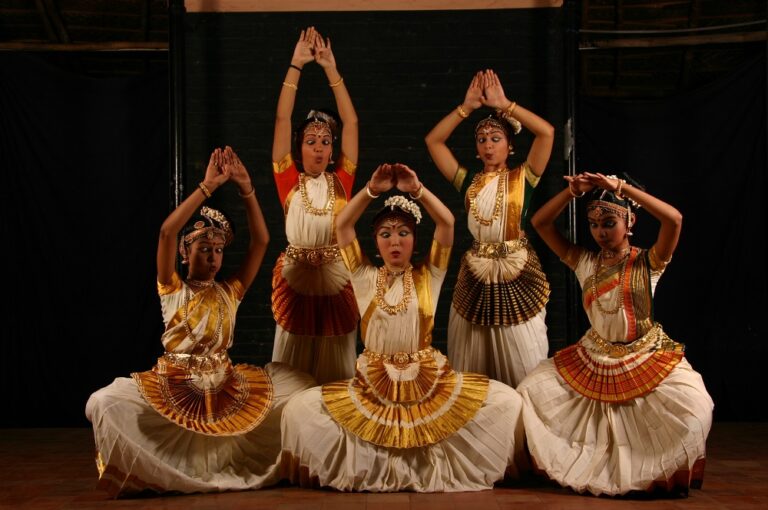Nature offers a wide range of inspiration to Mohiniyattam. Nagabandha, the movement of the snake, has several deep connotations in Kerala’s folk culture.
An elegant footwork is the foundation of any dance form. It is an essential beginning lesson in Mohiniyattam as well. In our previous articles, we discovered the beauty of the Hamsa pada or the swan movement Kukkuda pada or the movement of the rooster Mayoora pada or the peacock movement and Manduka pada or the frog movement.
Here we learn the movement of the quiet serpent or Naga Bandha. In the serpent movement, the dancer moves her feet backwards one-by-one through a circular movement with the big toe touching the ground. This movement reminds us of a snake’s semi-circular movements.
Philosophically speaking, this movement also reminds us that one should elevate oneself from the mere mortal existence toward the penultimate spiritual joy like the Kundalini serpent. Serpents enjoy a special status in the religious and spiritual thoughts of India and Kerala.
Nagabandha and Serpent imageries
Serpent worship was common in several traditions. Serpent groves were maintained in families as a sacred place for many centuries. The Vedanta and Tantra traditions also speak volumes about serpent imageries. These may have inspired the name of this padam used in Mohiniyattam.





Kundalini yoga exemplifies the importance given to serpents. In the yoga tradition, the human spirit is identified as a serpent that lies at the distal end of the spinal cord. This metaphor is particularly important in the Shaiva school of thought. It also relates to the ancient mother goddess worship.
The ritual of ancient serpent worship in Kerala is still evident in the folk art form of Sarppam Pattu.
Trance and choreography
Sarppam Pattu is usually performed to entice the serpent gods. This is usually performed by the Pulluvar community. The performance is usually conducted in Sarppa Kavu or serpent groves or in front of houses. An elaborate mural painting of the serpent gods is created using natural powders including Turmeric and rice powder. The performance also includes music played on Pullor Kudam, Veena and cymbals alongside vocal music.
As the night progresses, it is believed that the members of the become possessed by serpent gods and they enter a state of trance and erases the painting. Beautiful imageries created by such rituals have been an inspiration for dance sequences and movements in Mohiniyattam including several of my choreographies.
It can readily be seen that these padams are inspired by the day-to-day movements that we see in nature. In dance, they also offer ample scope for philosophical and spiritual interpretations of the context and narratives used in story telling by the dance.
The possibility of linking the worldly and the philosophical realms by means of the aesthetics of movements and acting is unique to Indian classical dance forms like Mohiniyattam.
Photo courtesy: Natanakairali archives

Assisted by Sreekanth Janardhanan




